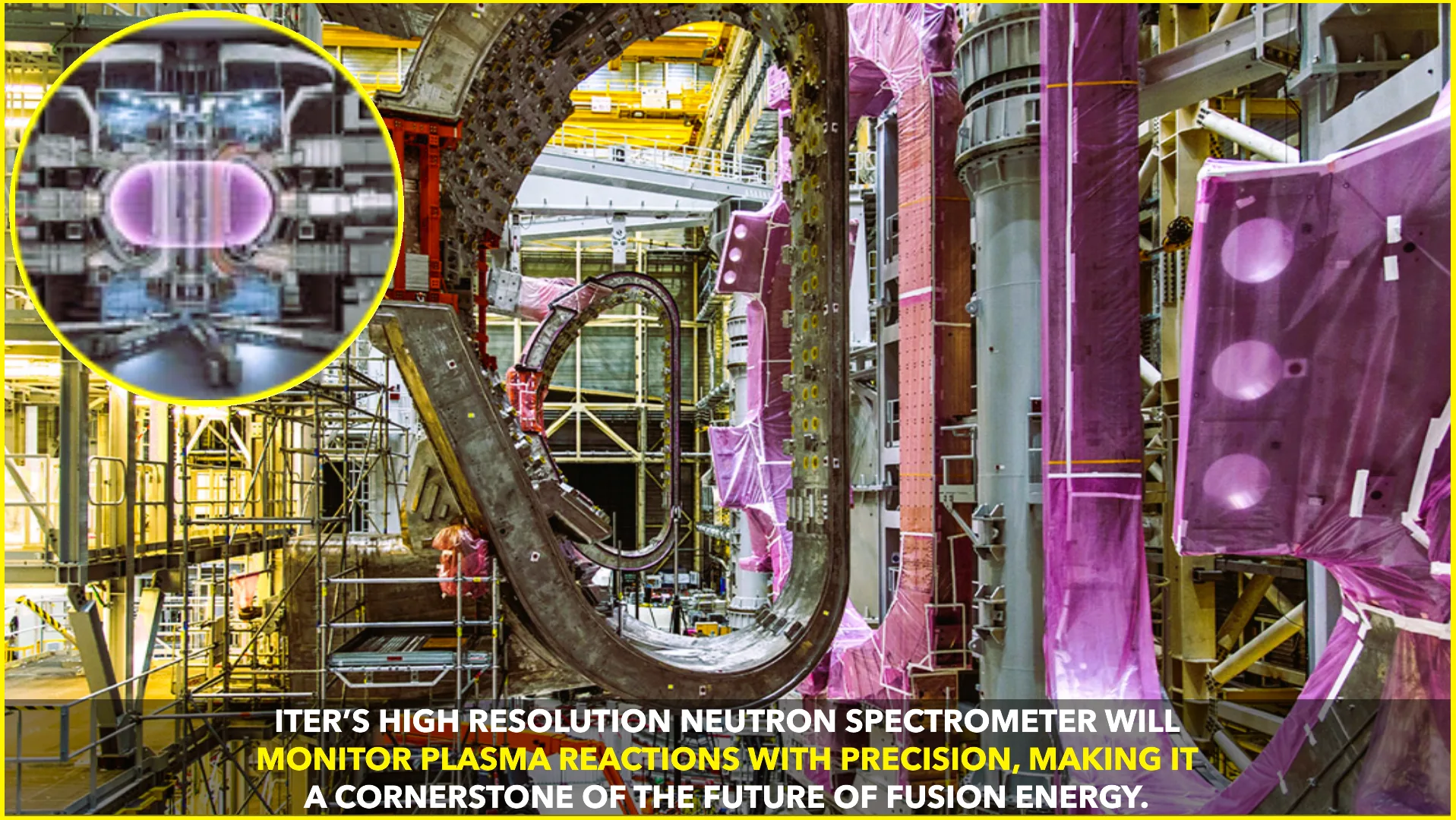The ITER fusion project, one of the most ambitious scientific collaborations in human history, is designed to prove that nuclear fusion can be harnessed as a practical and sustainable energy source. Located in southern France, ITER brings together 35 nations with the common mission of unlocking virtually limitless, clean power. At the heart of this project are advanced plasma diagnostic tools, and among them, the High Resolution Neutron Spectrometer (HRNS) stands out as an indispensable component.
Why Fusion Needs Precision Diagnostics
Fusion is the process that powers the Sun, where hydrogen nuclei merge under extreme temperatures and pressures to release tremendous amounts of energy. Reproducing this reaction on Earth requires confining superheated plasma at temperatures exceeding 150 million degrees Celsius.
To control such an environment, scientists need precise measurements of what is happening inside the plasma. This is where diagnostic tools come into play. While hundreds of instruments monitor various parameters such as temperature, density, and magnetic confinement, the neutron spectrometer has a special role: it tells researchers about the fusion reactions themselves.
The Role of the HRNS
During fusion, particularly deuterium-tritium fusion—the fuel mixture that ITER will use—neutrons are released with extremely high energy. By measuring these neutrons, scientists gain direct information about the reaction rates inside the plasma. The HRNS does this with exceptional accuracy by analyzing the tiny differences in neutron energy, known as the Doppler broadening effect.
This means the spectrometer is not just counting neutrons; it is providing deep insights into the plasma’s temperature, fuel composition, and the balance between deuterium and tritium. Such data are critical for fine-tuning the conditions necessary to sustain fusion reactions for longer periods, a key step toward making fusion power plants a reality.
Building for Extreme Challenges
Designing an instrument capable of functioning in ITER is no small feat. The HRNS must operate in a harsh environment, bombarded by intense radiation and heat, all while maintaining precision. To achieve this, it uses advanced detection technologies, including crystals that can diffract neutrons and cutting-edge electronic systems capable of capturing signals with minimal noise.
Moreover, the system must remain highly reliable for decades, since ITER will run experiments spanning many years. This combination of endurance and accuracy makes the HRNS one of the most challenging yet vital plasma diagnostic systems ever developed.
Why the HRNS is Essential for ITER
The ITER project is not just about producing fusion reactions—it’s about learning how to control them. The HRNS contributes to this mission in several ways:
- Fuel Ratio Monitoring: By detecting the balance between deuterium and tritium, it ensures optimal fuel usage.
- Plasma Heating Measurements: It reveals how much of the plasma’s heat comes from fusion reactions, as opposed to external heating systems.
- Safety Assurance: Monitoring neutron production is also crucial for maintaining safe operating conditions.
In short, the HRNS acts as ITER’s “fusion thermometer,” keeping track of the most fundamental processes happening at the core of the experiment.
A Step Toward the Future of Energy
The success of ITER depends on precise and reliable plasma diagnostics, and the HRNS is at the forefront of this mission. By delivering accurate neutron data, it helps researchers refine plasma control techniques, paving the way for the first sustained fusion reactions on Earth.
Looking beyond ITER, the knowledge gained from the HRNS will guide the design of future commercial fusion power plants. These plants aim to provide clean, virtually limitless energy without the long-lived radioactive waste associated with fission reactors.
Conclusion
The High Resolution Neutron Spectrometer may not capture headlines like the giant tokamak reactor itself, but without it, ITER’s mission would be incomplete. This sophisticated instrument is more than just a diagnostic tool—it is a bridge between the experimental fusion reactions of today and the power plants of tomorrow.
As ITER progresses, the HRNS will continue to play a defining role, ensuring that humanity takes one step closer to harnessing the same power that fuels the stars.










